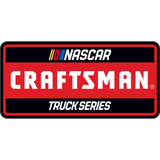
NASCAR chairman Brian France clarifies meaning of, 'Boys, have at it'
When NASCAR vice president of competition Robin Pemberton declared, "Boys, have at it," prior to the 2010 Sprint Cup Series season, some drivers took it as a license to police themselves under virtually all circumstances without risk of a penalty.
But in light of Tuesday's two-race suspension on Matt Kenseth for deliberately wrecking Joey Logano last weekend at Martinsville Speedway, NASCAR chairman and CEO Brian France wants to provide some clarity on Pemberton's more than 5-year-old decree that has often been a source of ambiguity among drivers and fans.
"That's not what he said or what he meant," said France, speaking Wednesday afternoon on SiriusXM NASCAR Radio. "When he said, 'Boys, have at it,' it was at a time when we were being accused of over-officiating the events. We were accused of calling too many penalties, too many on-track violations and so on.
"We've been at this for over 60 years, and sometimes we will over-officiate a string of races. That can happen, and when it does we'll try to catch ourselves and make sure we're consistent in how we officiate the events in a traditional NASCAR way. What Robin was saying a few years ago was, 'Hey, look. Boys, have at it. Do your normal thing and if we over-officiate we'll draw back on that and let the normal racing action of NASCAR happen.' That's what he meant and that's what we've tried to do."
"When there are lines that are crossed like we believe there were at Martinsville, then NASCAR will step in and deal with that, and it's as simple as that," France told SiriusXM NASCAR Radio.
France went on to explain what he believes is the difference between what Danica Patrick did to David Gilliland at Martinsville, and what Kenseth did to Logano. In both cases, a driver intentionally tried to wreck another. But in the case of Patrick and Gilliland, neither driver was in the Chase.
On Tuesday, NASCAR penalized Patrick 25 points -- a far cry from the two-race suspension levied against Kenseth.
"They're similar in many ways but they are very different because of the stakes that were on the line with the Chase and so on,'' France said. "Going back to Richmond (the 2013 "SpinGate" scandal), we've been very clear when anybody in the industry, any driver or participant intentionally tries to alter the outcome of events or championships, that crosses a different line than a racing problem between two drivers. So obviously the significance of what was on the line had to be taken into consideration.''
"We have a door that's wide open every day at the racetrack," France said. "Richard Buck, who is our series director . . . is happy to explain exactly where the lines are in NASCAR. We have 60 years of competing and having races run in a certain style. And if you have any questions about that, you can walk in and he will explain it in five minutes for you. It's very simple. It's very easy to understand.''
Asked why drivers have to sometimes ask NASCAR to explain rules that aren't clearly spelled out in the drivers meetings prior to each race, France offered a simple but candid explanation.
"We can't lay out 25 different examples of what may or may not happen out there. We can't do that," he said. "The drivers meetings would last three hours. So naturally we can only lay out the general rules of the road and what our expectations are.
"How many times have you heard me say that this is a contact sport? There's likely to be contact throughout an event, particularly late in the race, and it happens all the time. It happened, as an example, with Ryan Newman at Phoenix (in last year's Chase elimination race) . . . where he leaned on pretty hard, with some contact with Kyle Larson with a lot on the line. That's part of NASCAR. Kyle Larson got the short end in that particular exchange, right?
"Ryan Newman was operating within the rules of NASCAR. You can drive aggressively and if there's a little bit of contact, then we understand that. There's nothing new that went on at Kansas (with Logano wrecking Kenseth) that doesn't go on all the time."
While France believes Kenseth's actions at Martinsville were wrong, he doesn't fault the 2003 Sprint Cup Series champion for being angry about getting wrecked by Logano at Kansas. As a result of the wreck, Kenseth was unable to take advantage of his best opportunity to reach the Eliminator 8 round of the Chase.
"Matt's a great driver," France said. "I think Matt was just at the end of his rope, so to speak, and he did what he thought he needed to do, and we'll do what we need to do."
"The best way to get even with somebody that did something that you didn't like, that's to race them as hard as they raced you under similar circumstances," he said. "No more and no less. That's how you get even."


